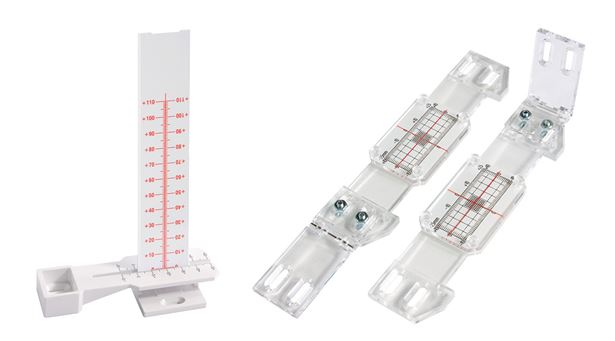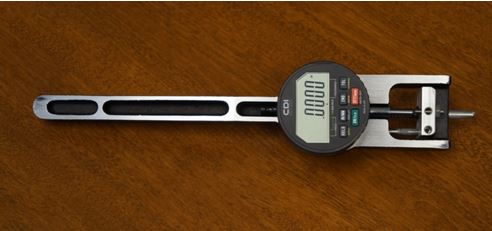Cracking in a concrete or masonry structure may only be cosmetic and not a cause for concern; however, this cracking can also signify more serious underlying issues that affect a structure’s serviceability and integrity. Carrasquillo Associates (CA) uses a combination of visual observations and photographic documentation, crack monitoring, and/or strain gauge monitoring to determine the severity and nature of the cracking, as well as to detect changes in the cracking with time. Visual observations serve as the first step to determine a basic cause or classification of the cracking, but for quantitative data, CA utilizes various monitors and strain gauge setups. The crack/displacement monitors take several forms depending on the application, as shown in Figure 1.
These monitors are typically attached to the structure using either epoxy or screws. However, the digital strain gauge (Figure 2) allows for finer measurements than the crack/displacement monitors. In addition, the measuring points which are installed for the digital strain gauge are less visible than the crack/displacement monitors shown in Figure 1, making them ideal for public areas requiring discrete placement. For digital strain gauge measurements, a standard template block is used to set or epoxy measurement points onto the structure. These points are measured using a digital strain gauge.
Both crack/displacement monitors and digital strain gauge measurements are recorded periodically. The data is compared to previous measurements to determine if the cracks are widening or if the structure is moving. The frequency of crack monitoring depends on the structure type, distress type, and level of risk. CA has completed numerous crack monitoring programs and can work with clients to develop a crack monitoring program that manages costs while minimizing risk.
Figure 1: Crack/Displacement Monitors
Figure 2: Digital Strain Gauge

